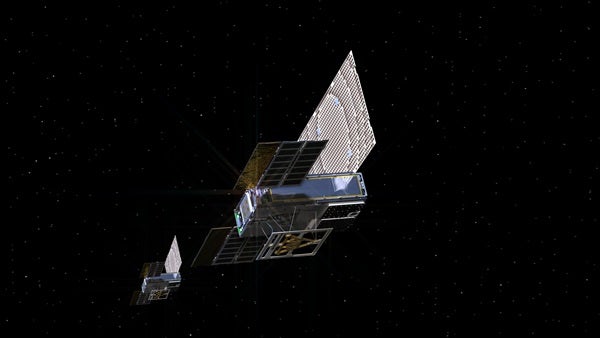The satellites did their job. But now, more than two months after InSight landed, the CubeSats have gone silent as they continue drifting past Mars, and NASA doesn’t expect to hear from them again.
Tiny Satellites Do Big Work
CubeSat missions have proven popular in Earth orbit, as their low cost and tiny launch weight means many universities can afford to perform their own orbital science. But it’s rare for them to go adventuring so far from home. WALL-E and EVE’s success are proof that small satellites are up to the challenge. And they show that it is possible to send follow-along, highly-focused science missions to Mars. Most CubeSats are roughly 4 inches (10 centimeters) square, but the MarCO satellites are actually six units packed into one, leaving each one about the size of a briefcase.
The MarCO satellites carried cameras, communications equipment, and solar panels to keep themselves charged. They launched with InSight on the same rocket, but then separated and made their own way to Mars. They kept pace, arriving on target in order to send back pictures and information on InSight’s landing. NASA had backup in the form of full-size satellites to track InSight, should MarCO have gone astray, but the help wasn’t necessary, as the tiny satellites did their jobs admirably.
However, now NASA hasn’t heard from the MarCO satellites in more than a month. WALL-E last pinged home December 29, while EVE last checked in January 4. NASA is doubtful that they will check in again, but their success is seen as a good sign for the future of CubeSats on NASA missions.










